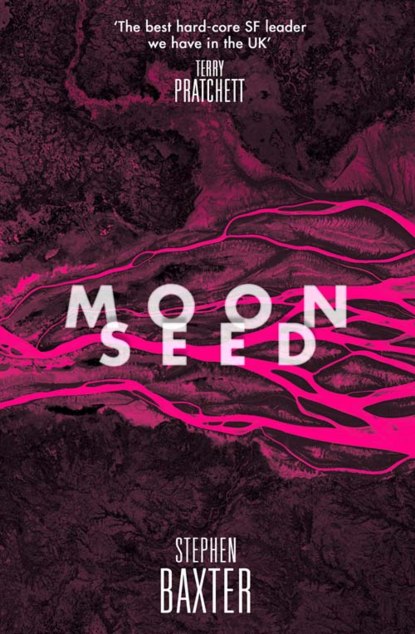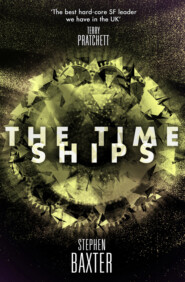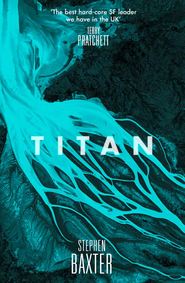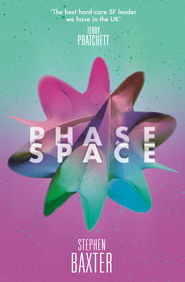По всем вопросам обращайтесь на: info@litportal.ru
(©) 2003-2024.
✖
Moonseed
Автор
Год написания книги
2018
Настройки чтения
Размер шрифта
Высота строк
Поля
13
One more time to make love. Maybe the last time.
I have to stop thinking like this, thought Monica Beus. I’ll finish up doing a countdown …
But still, here was dear old Alfred, as tender and gentle as he ever was, and, in the cool mountain air that filled Monica’s apartment here in Aspen, they coupled like two elderly spacecraft gingerly docking.
Athletics, it wasn’t.
But it hadn’t hurt as much as she had expected. Maybe the quacks were right; maybe their new, ‘natural’ chemotherapy regime really was a little less brutal.
And afterwards, they shared the post-coital cigarette they were both too old ever to give up – and what would be the point anyhow? – and then they sat up in bed, blankets around their bony shoulders.
And they pulled their computers to their laps and went back to work.
Alfred got online to the International Astronomical Union nets, and Monica skimmed through the latest entries to the electronic preprints library being maintained by the National Laboratory at Los Alamos.
The papers on string theory, since the Venus incident, had become a blizzard. The excitement seemed to crackle out of the screen at her.
But Alfred had found something new on the astronomy nets and was becoming excited too.
Now people had started looking – NASA had hastily thrown up a couple of new satellites – they were starting to find signatures like the Venus event’s all over the sky. Alfred tapped the screen to show her. ‘Like these. Gamma ray bursts. Called GRBs by those who study them. Flashes of energy, emanating from explosions that lasted a few seconds …’
Huge explosions, he told her. By some estimates, radiating more energy in a few seconds than the sun does in ten billion years. There were lots of candidate explanations, none of them particularly satisfactory. Maybe asteroids were crashing onto the surfaces of neutron stars. Maybe neutron stars were colliding. Maybe giant helium stars were imploding.
‘Or maybe,’ Alfred said feverishly, ‘some interstellar cousin of our Venus killer is at work …’
She found it hard to concentrate on what he was saying, given the buzz on the Los Alamos nets.
She tried to summarize for him what had been going on in the world of theoretical physics, galvanized as it was by the natural laboratory which Venus had somehow, magically, turned into. ‘Alfred, string theory is the best way we have to describe the kind of extremely high energy density events we’re encountering inside Venus …’
String theory was a candidate Theory of Everything – which, if successful, would be a simple theory whose corollaries would describe a universe that was unmistakeably ours: with quarks and electrons, gravity, nuclear forces and electromagnetism, three space dimensions and one of time, a universe of atoms and babies and stars.
‘According to string theory,’ Monica said, ‘the most elementary object in the universe is a loop of string. Unimaginably tiny. Ten to minus thirty-three centimetres … The string has different modes of vibration. Like a violin string. Each mode corresponds to a particle, a quark or an electron. And the laws of physics correspond to harmonies between the strings’ tones.’
‘Ah.’ He smiled. ‘The Universe as a symphony. Rather beautiful.’
‘But,’ she said, ‘there’s a complication. String theory only works in a ten-dimensional space-time.’
Alfred rolled his eyes. ‘I always hated theoreticians.’
‘Now, the missing six dimensions are there, but they are crumpled up. Like garden hoses, rolled around themselves.’
Alfred struggled with that. ‘So these dimensions are there. But too small to see.’
Monica hesitated. ‘Something like that. Yes. The trouble is, there are tens of thousands of ways for the six dimensions to crumple. Each of those different ways generates a different internal space, as we call it. And in each internal space, the strings adopt a different solution.’
‘A different solution?’
‘One internal space describes our universe, with three types of electron, and one photon. Another might have two photons. Or something even more exotic. And so on.’ Monica leaned forward. ‘Now. The theoreticians are suggesting there is a – tear in space – at the heart of Venus. Or what Venus has been made into.’
‘A tear?’
‘A way into another internal space. You see, when a string enters a new internal space, it adopts a different configuration.’ She cast around for an analogy. ‘Like ice. Take it from the Arctic to the Sahara, and it melts. Vaporizes. It adopts a configuration that’s suitable for the environment.’
‘And so …’
‘And so, at the heart of Venus, we think we’re seeing strings being ripped apart. Literally. Maybe even being expanded to macro lengths before collapsing back down to new configurations.’
‘Hence, the exotic particles we’ve observed.’
‘Elementary particles as massive as bacteria. Yes.’
‘A tear in space, in the heart of the Solar System,’ he mused. ‘A pocket universe … Strange days indeed.’
‘Certainly we’re looking at a release of energy more than enough to overcome gravitational binding energy.’
‘Umm. But why?’ Alfred asked. ‘What’s it for?’
‘Since we’ve no idea how this is being done,’ she said, ‘we’re nowhere near an answer to that.’
She scanned through more preprints. A flood of them, a kaleidoscope of theory, scattered shards of calculation and insight and speculation. Too much for anyone to read, let alone review. ‘Makes me wish I was young again,’ she said.
‘Umm?’
‘The excitement out there. String theory describes the high energy stuff. Energies of up to ten to power nineteen giga-electronvolts. Which is ten million billion times higher than anything we could create in any conceivable accelerator. So much was hidden from us, in this low-energy world we inhabit. Like trying to deduce the nature of a lion, after being given a glimpse of his tail.’
‘And string theory is a description of the rest of the lion.’
‘With about as much guesswork involved. Yes. But now, it’s as if Venus has conveniently transmuted into the biggest particle accelerator in the universe. We can see the stuff we struggled to describe before. Now, even the sceptical types are saying we might reach a true Theory of Everything in five, ten years at most. The excitement is extraordinary …’
But now Alfred had found something else on the IAU net. Evidence of more Planckian cosmic radiation, just a trickle of it, coming – not from a remote planet, not from exotic sources that lay maybe beyond the Galaxy itself – but a lot closer to home.
He pulled up a sketchy diagram from a new preprint: a circle centred on a schematic Earth, two points picked out on the orbit of the Moon. ‘L4 and L5. Gravitationally stable, like shallow pits in spacetime: the places in the Moon’s orbit, ahead of it and behind it, where you’d expect debris to collect. Dust, whatever.’
She looked at the closely-printed text, tried to follow it. ‘What are they saying? That the Venus killer is there?’
‘No. Just that, on a small scale, the processes we’re observing on Venus are replicated there, on a much smaller scale.’
She frowned. ‘How so? Something working on the raw material there? But what?’
‘I don’t know.’
‘And how did it get there? Did it start on Venus, and come here, to Earth-Moon? Or …’ Or did it start here, on Earth or Moon, and spread out across space, to Venus?
There was, of course, no answer: merely new pieces of the puzzle, fragmentary glimpses, imperfectly described by the staid, passive language of technical papers.
Glimpses of something monstrous.











